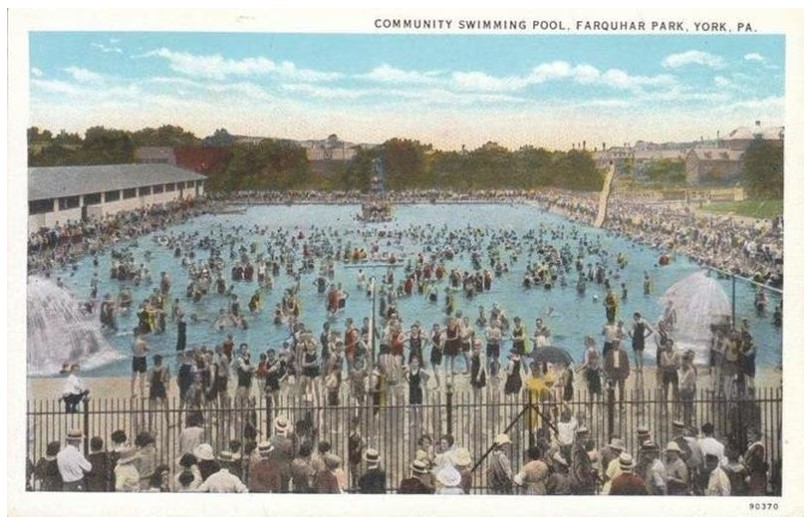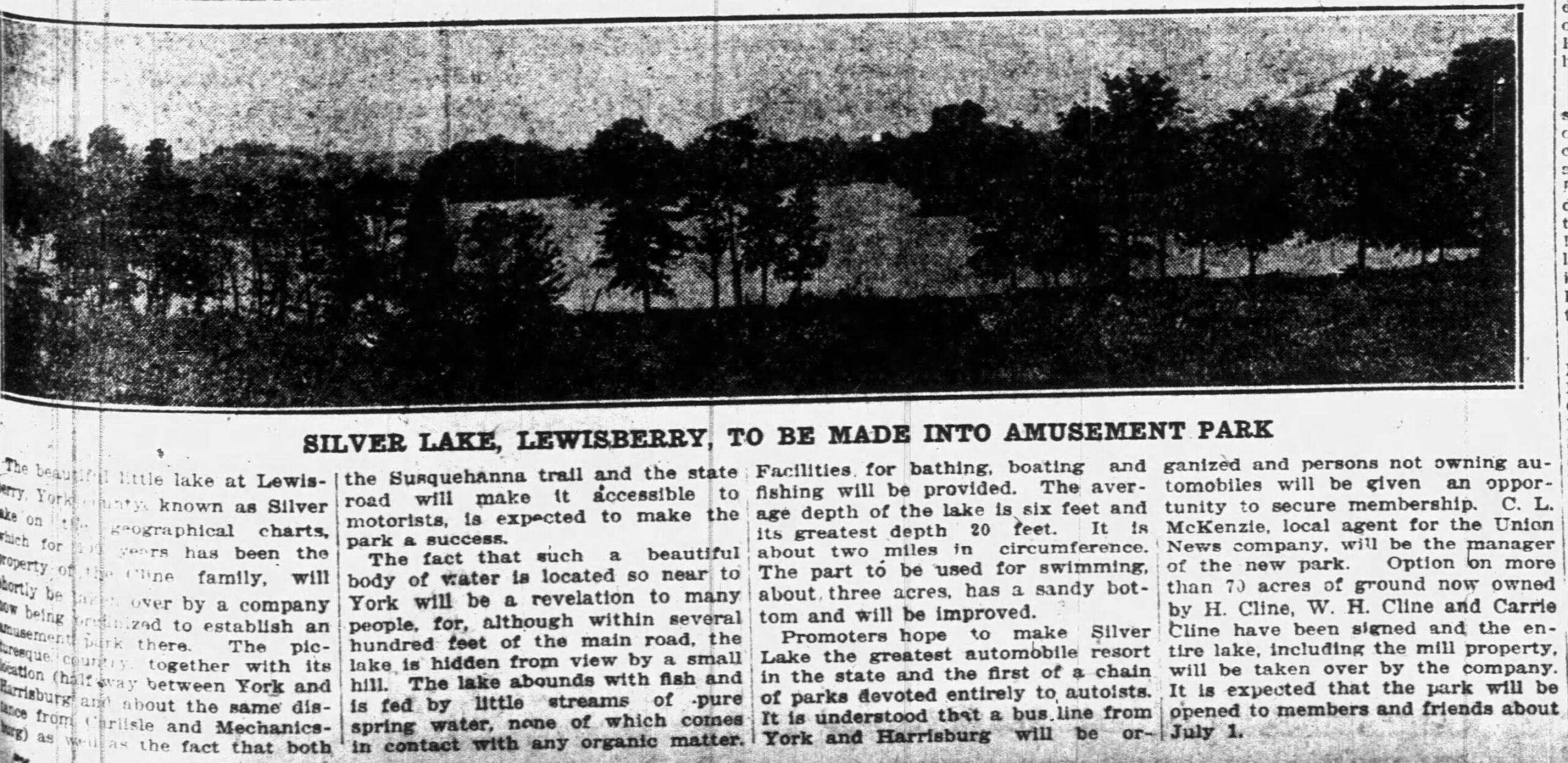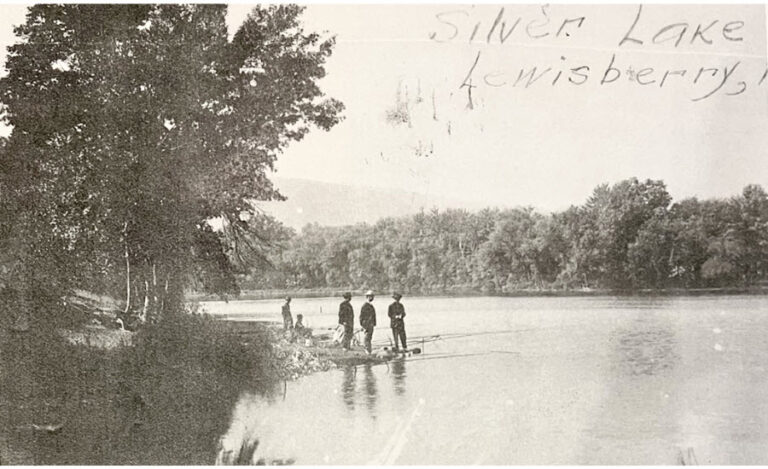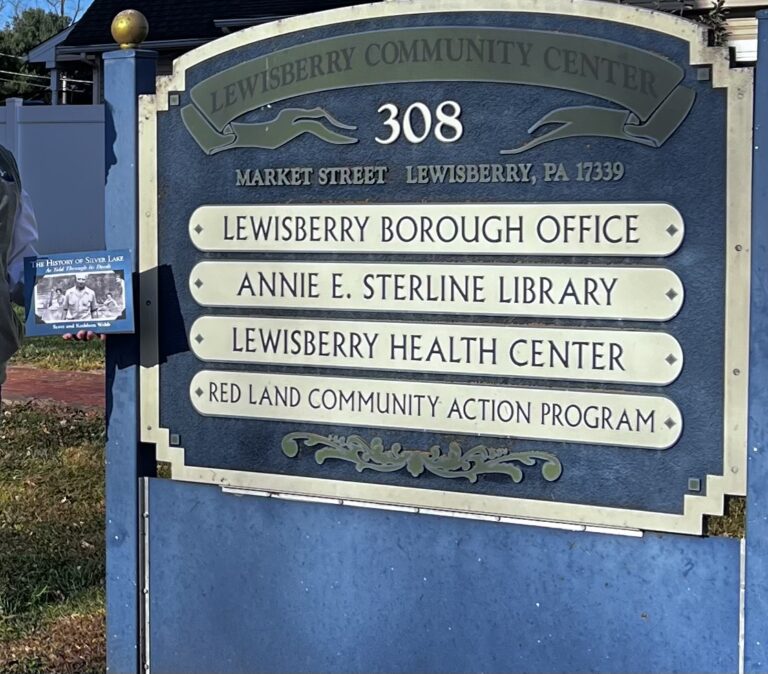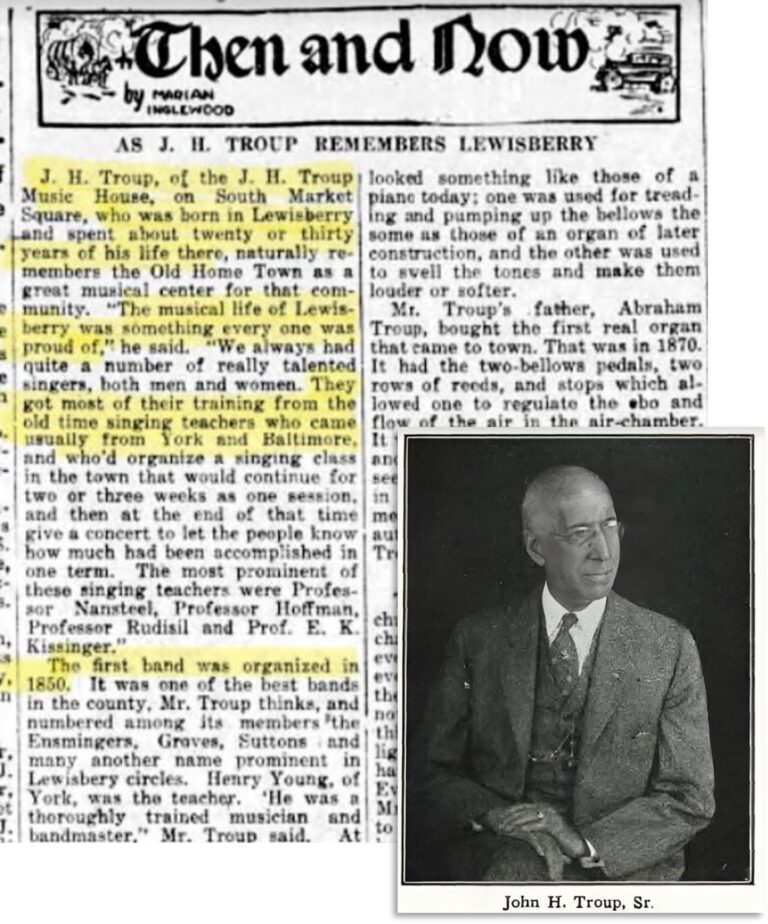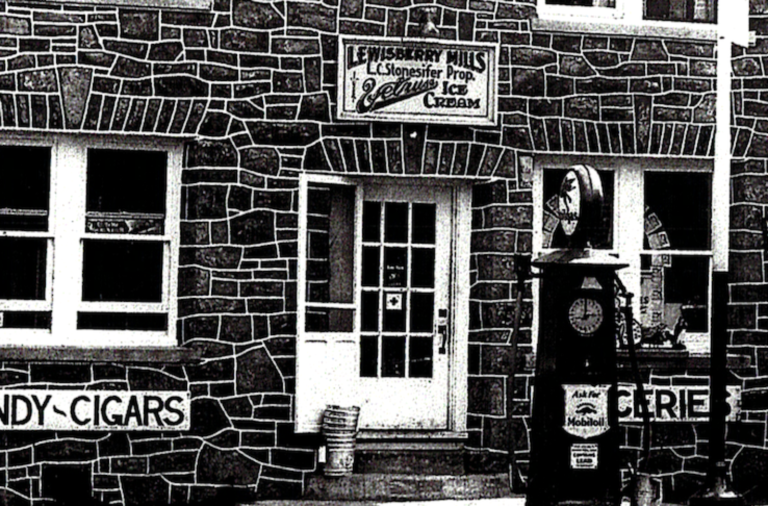One unexpected discovery during our research for “The History of Silver Lake as Told Through Its Deeds” was that two York residents, LeGrand Dutcher and C.L. McKenzie, made a serious effort to establish an amusement park at Silver Lake in Lewisberry.
In the late 19th and early 20th centuries, amusement parks enjoyed a golden age, becoming a beloved form of entertainment. This surge in popularity was driven by transportation advancements like trolleys, railroads and automobiles, which allowed people to travel more easily beyond urban areas. As wages rose and the five-day work week became standard, individuals had both the time and money to visit these parks, which featured roller coasters, Ferris wheels, carousels, sideshows, and live entertainment. Developers often situated these parks near lakes and rivers, offering visitors a chance to escape the summer heat and enjoy picnics, swimming, and boating.

Central Pennsylvania was home to several notable amusement parks during this period, including Hershey Park, Gretna Park, and Rocky Springs Park (Lancaster). Amidst this booming landscape, LeGrand Dutcher and C.L. McKenzie envisioned transforming Silver Lake in Lewisberry into the state’s premier automobile resort.
In 1921, a promotional article introduced the idea of Silver Lake becoming an amusement park. The article highlighted the park’s strategic location near York and Harrisburg, emphasizing its accessibility via modern roads. Silver Lake Incorporated, the company behind this initiative, claimed to secure purchase options for over 70 acres of land from the Cline family, with C.L. McKenzie appointed as the park’s manager.
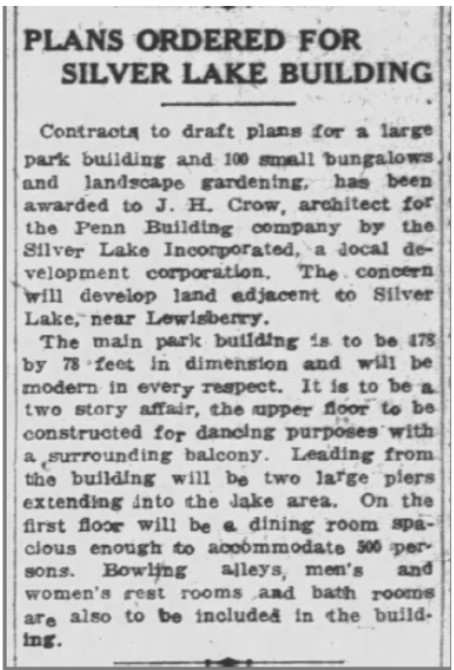
By January 1922, advertisements for Silver Lake ramped up, seeking salespeople and listing over 60 investor names to establish credibility and attract more backers. Despite these efforts, the project faced significant challenges. In February 1922, Silver Lake Incorporated published a final ad, noting a shortage of stock certificates due to high demand. However, just a month later, the directors met and decided not to proceed with the park unless they could secure a lease from the lake’s owners. Without this critical agreement, the venture came to an abrupt halt.
Was this ever a serious business venture? Consider the following points: there’s no record of a corporation named Silver Lake Incorporated on file with the Commonwealth of Pennsylvania. The news article claiming that Silver Lake Incorporated secured land options from W.H. (William Harrison) Cline and H. (Harry) Cline fails to clarify that these are actually the same person. Moreover, who names a corporation Silver Lake Incorporated when they don’t even have the rights to the lake? What kind of business could the corporation pursue after its name has already been discredited?
In just 76 days, Silver Lake Incorporated went from a promising venture to a failed project. Despite the initial excitement and fundraising efforts, and ample publicity, the inability to secure the necessary rights to the lake and surrounding land ultimately doomed the project from the start. The story of Silver Lake Inc. serves as a cautionary tale about the challenges of ambitious ventures, even during the heyday of amusement parks.
Stay tuned for more on this chapter in an upcoming blog post!
(If you’re interested in learning about old Pennsylvania amusement parks and don’t mind subscribing, consider visiting PennLive.com. You can search for their two-part series “Defunct and Abandoned Amusement Parks Across Pennsylvania,” which includes fascinating images of these historic parks.)
